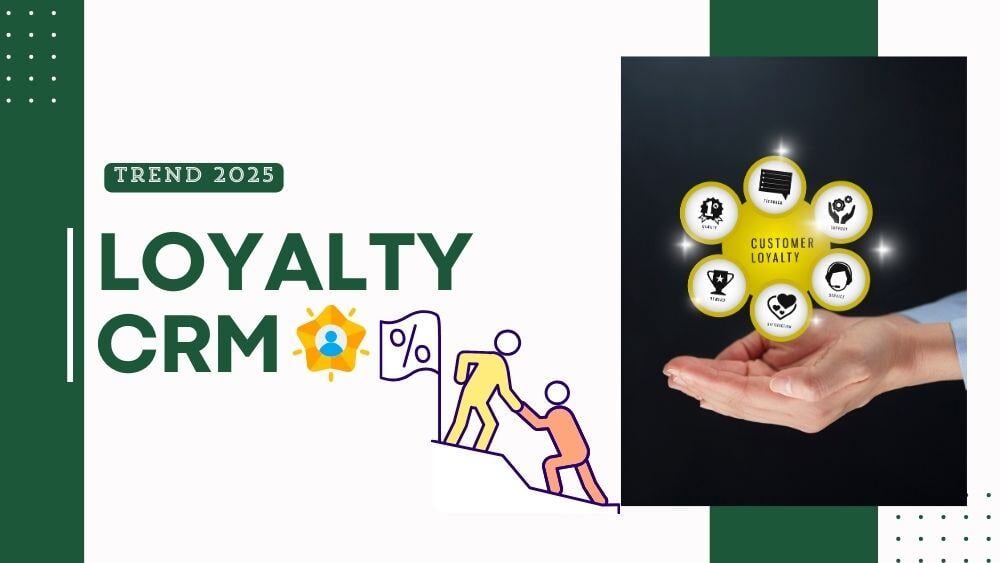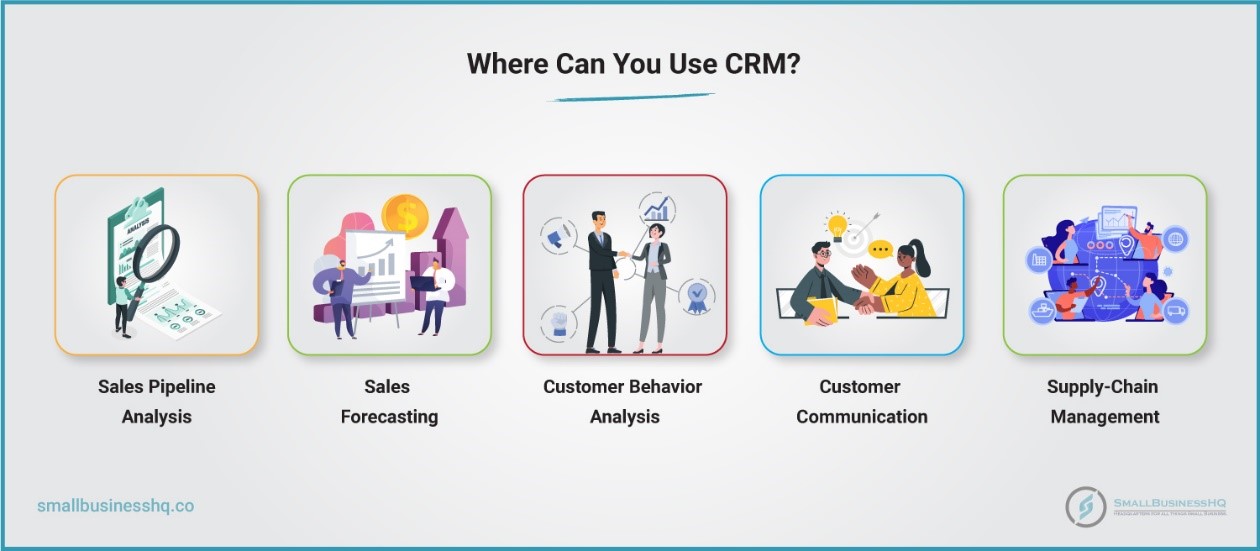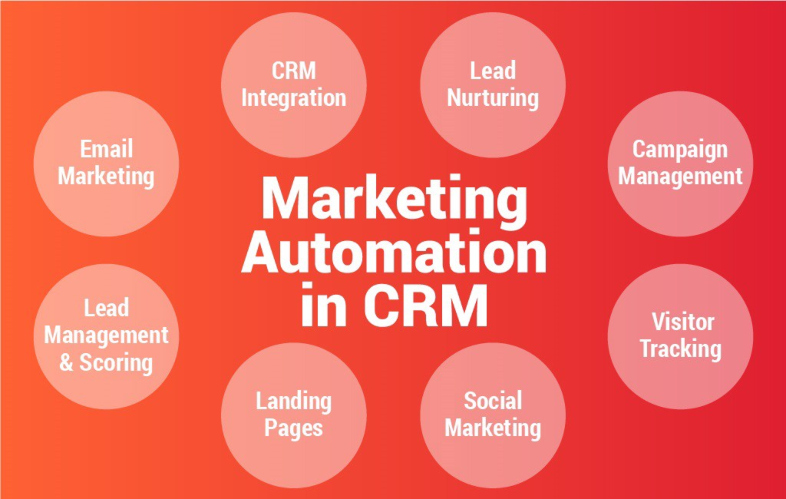
In the dynamic world of business, retaining customers is just as crucial, if not more so, than acquiring new ones. That’s where the power of Customer Relationship Management (CRM) systems, strategic marketing, and compelling loyalty programs converge. This comprehensive guide dives deep into how these three elements work in harmony to foster lasting customer relationships, boost brand advocacy, and drive sustainable growth. We’ll explore the intricacies of each component, providing actionable insights and real-world examples to help you craft a winning strategy.
Understanding the Pillars: CRM, Marketing, and Loyalty Programs
Before we delve into the specifics, let’s establish a clear understanding of each pillar:
Customer Relationship Management (CRM)
At its core, CRM is a technology and strategy designed to manage and analyze customer interactions and data throughout the customer lifecycle. It’s about understanding your customers, anticipating their needs, and providing personalized experiences. A robust CRM system serves as a central hub for all customer-related information, enabling businesses to:
- Centralize Customer Data: Store and organize customer information, including contact details, purchase history, communication logs, and preferences.
- Improve Communication: Facilitate seamless communication across all channels, ensuring consistent messaging and personalized interactions.
- Enhance Sales Processes: Streamline sales workflows, automate tasks, and track sales performance.
- Provide Better Customer Service: Empower support teams with the information they need to resolve issues quickly and efficiently.
- Analyze Customer Behavior: Gain valuable insights into customer trends, preferences, and pain points.
Popular CRM platforms include Salesforce, HubSpot, Microsoft Dynamics 365, and Zoho CRM, each offering a range of features and functionalities to suit different business needs.
Marketing
Marketing encompasses all activities aimed at promoting a product or service to potential customers. It’s about creating awareness, generating leads, nurturing relationships, and ultimately, driving sales. Modern marketing is data-driven and customer-centric, focusing on delivering relevant and valuable content to the right audience at the right time. Key marketing strategies include:
- Content Marketing: Creating and distributing valuable, relevant, and consistent content to attract and engage a target audience.
- Email Marketing: Nurturing leads and building relationships through targeted email campaigns.
- Social Media Marketing: Engaging with customers and building brand awareness on social media platforms.
- Search Engine Optimization (SEO): Optimizing website content to rank higher in search engine results.
- Paid Advertising: Running targeted advertising campaigns on platforms like Google Ads and social media.
Effective marketing efforts are crucial for attracting new customers and keeping existing ones engaged.
Loyalty Programs
Loyalty programs are designed to reward and recognize repeat customers, encouraging them to continue doing business with a brand. They are a powerful tool for increasing customer retention, driving repeat purchases, and fostering brand loyalty. The core principles of a successful loyalty program include:
- Rewarding Desired Behaviors: Offering points, discounts, or other incentives for purchases, referrals, and other actions.
- Personalization: Tailoring rewards and offers to individual customer preferences.
- Ease of Use: Making it easy for customers to join, earn, and redeem rewards.
- Communication: Keeping customers informed about their progress and available rewards.
- Value Proposition: Providing rewards that are perceived as valuable and desirable by customers.
Examples of popular loyalty programs include tiered programs, points-based systems, and cashback rewards.
The Synergy: How CRM, Marketing, and Loyalty Programs Work Together
The true power lies in the synergy between CRM, marketing, and loyalty programs. When these three elements are integrated, businesses can create a cohesive and personalized customer experience that drives loyalty and growth. Here’s how they work together:
CRM as the Foundation
The CRM system serves as the central hub, providing the data and insights needed to inform marketing and loyalty program strategies. It allows you to:
- Segment Customers: Group customers based on their demographics, purchase history, behavior, and preferences.
- Personalize Marketing Messages: Tailor marketing communications to specific customer segments, increasing relevance and engagement.
- Track Loyalty Program Performance: Monitor the effectiveness of loyalty programs by tracking participation, redemption rates, and customer lifetime value.
- Identify High-Value Customers: Recognize and reward your most loyal customers with exclusive offers and personalized experiences.
Marketing Fuels Engagement
Marketing efforts are used to attract customers to the loyalty program and keep them engaged. This includes:
- Promoting the Loyalty Program: Informing customers about the benefits of joining the program through email, social media, and in-store promotions.
- Targeted Campaigns: Sending personalized email campaigns to program members, offering exclusive discounts, early access to sales, and other incentives.
- Content Marketing: Creating valuable content that resonates with loyalty program members, such as product recommendations, how-to guides, and exclusive content.
- Feedback Collection: Using marketing channels to gather feedback from loyalty program members, helping to improve the program and customer experience.
Loyalty Programs Drive Retention
Loyalty programs, in turn, leverage marketing and CRM data to:
- Reward Repeat Purchases: Offering points, discounts, or other incentives for repeat purchases, encouraging customers to return.
- Recognize Customer Loyalty: Providing exclusive benefits and personalized experiences to high-value customers, reinforcing their loyalty.
- Gather Customer Data: Collecting valuable data on customer preferences and behaviors through loyalty program participation.
- Increase Customer Lifetime Value (CLTV): By keeping customers engaged and coming back, loyalty programs increase the overall value of each customer relationship.
Building a Winning CRM, Marketing, and Loyalty Program Strategy
Creating a successful strategy requires careful planning, execution, and ongoing optimization. Here’s a step-by-step guide:
1. Define Your Goals and Objectives
What do you hope to achieve with your CRM, marketing, and loyalty programs? Are you aiming to increase customer retention, drive repeat purchases, acquire new customers, or improve customer satisfaction? Clearly defined goals will guide your strategy and help you measure your success. Consider setting SMART goals: Specific, Measurable, Achievable, Relevant, and Time-bound.
2. Choose the Right CRM Platform
Select a CRM platform that meets your business needs and budget. Consider factors such as scalability, ease of use, integration capabilities, and reporting features. Research different platforms and compare their features to find the best fit for your organization. Think about what data you need to collect and how you plan to use it.
3. Segment Your Customer Base
Use your CRM data to segment your customers into different groups based on their demographics, purchase history, behavior, and preferences. This will allow you to tailor your marketing messages and loyalty program offers to each segment, increasing relevance and engagement. Common segmentation strategies include:
- RFM Analysis: Recency, Frequency, Monetary value. This method analyzes how recently customers made a purchase, how often they purchase, and the amount they spend.
- Demographic Segmentation: Grouping customers based on age, gender, location, income, and other demographic factors.
- Behavioral Segmentation: Grouping customers based on their online behavior, purchase history, and engagement with your brand.
- Psychographic Segmentation: Grouping customers based on their values, interests, and lifestyles.
4. Develop a Personalized Marketing Strategy
Use your CRM data to create personalized marketing campaigns that resonate with each customer segment. This includes:
- Targeted Email Campaigns: Send personalized emails to specific customer segments, offering exclusive discounts, product recommendations, and other incentives.
- Personalized Website Experiences: Tailor your website content to individual customer preferences, such as displaying recommended products or offering personalized promotions.
- Retargeting Ads: Show targeted ads to customers who have visited your website or interacted with your brand, reminding them of your products or services.
- Content Marketing: Create content that caters to the specific interests and needs of each customer segment.
5. Design a Compelling Loyalty Program
Create a loyalty program that rewards desired customer behaviors and provides value to your customers. Consider different program structures, such as:
- Points-Based Programs: Customers earn points for purchases, referrals, and other actions, which they can redeem for rewards.
- Tiered Programs: Customers advance through different tiers based on their spending or engagement, unlocking increasingly valuable rewards.
- Cashback Programs: Customers earn a percentage of their purchases back in the form of cashback.
- Subscription Programs: Customers pay a recurring fee for access to exclusive benefits, such as free shipping, discounts, and early access to sales.
Make sure your program is easy to understand, easy to join, and offers rewards that are desirable to your target audience. Ensure the value proposition is clear and communicated effectively.
6. Integrate Your Systems
Integrate your CRM, marketing automation platform, and loyalty program to ensure seamless data flow and automation. This will allow you to:
- Automate Marketing Campaigns: Trigger automated email campaigns based on customer behavior, such as welcome emails, abandoned cart emails, and birthday emails.
- Personalize Loyalty Program Communications: Send personalized emails to loyalty program members, informing them of their points balance, available rewards, and exclusive offers.
- Track Customer Behavior Across Channels: Gain a complete view of customer behavior across all channels, including website activity, email interactions, and purchase history.
- Improve Data Accuracy: Ensure that customer data is consistent and accurate across all systems.
7. Monitor and Analyze Performance
Regularly monitor and analyze the performance of your CRM, marketing, and loyalty programs to identify areas for improvement. Track key metrics such as:
- Customer Retention Rate: The percentage of customers who return to make repeat purchases.
- Customer Lifetime Value (CLTV): The total revenue generated by a customer over their relationship with your brand.
- Customer Acquisition Cost (CAC): The cost of acquiring a new customer.
- Conversion Rates: The percentage of customers who complete a desired action, such as making a purchase or signing up for a newsletter.
- Redemption Rates: The percentage of loyalty program members who redeem their rewards.
- Customer Satisfaction (CSAT): A measure of how satisfied customers are with your products or services.
- Net Promoter Score (NPS): A measure of customer loyalty and willingness to recommend your brand.
Use these metrics to identify areas where you can optimize your strategy, such as refining your customer segmentation, personalizing your marketing messages, or improving your loyalty program offers. Utilize A/B testing to see what works best.
8. Continuously Optimize
The business landscape is constantly evolving, so it’s crucial to continuously optimize your CRM, marketing, and loyalty programs. Regularly review your strategy, gather customer feedback, and make adjustments as needed. Stay up-to-date on the latest industry trends and best practices. Be prepared to adapt your strategy as your business grows and customer needs change. This includes:
- Gathering Customer Feedback: Utilize surveys, feedback forms, and social media monitoring to understand customer needs and preferences.
- Testing and Experimentation: Regularly A/B test different marketing messages, loyalty program offers, and website designs to identify what resonates best with your customers.
- Staying Updated: Keep informed about the latest marketing trends, CRM technologies, and loyalty program best practices.
- Analyzing Competitors: Study your competitors’ strategies and identify opportunities to differentiate your brand.
Examples of Successful CRM, Marketing, and Loyalty Program Integration
Let’s look at some real-world examples of how businesses are successfully integrating CRM, marketing, and loyalty programs:
Starbucks
Starbucks’ rewards program is a prime example of integrated success. Customers earn stars for purchases, which they can redeem for free drinks, food, and merchandise. The program is integrated with their mobile app, allowing customers to order ahead, pay, and track their rewards. Starbucks uses CRM data to personalize offers and recommendations based on customer purchase history and preferences. They leverage their app to send targeted promotions, such as double-star days and exclusive offers to program members. The seamless integration of their CRM, marketing, and loyalty program has fostered strong customer loyalty and significantly contributed to their revenue growth. They also leverage gamification elements to encourage engagement.
Sephora
Sephora’s Beauty Insider program is another outstanding example. The program offers tiered rewards based on spending, giving customers access to exclusive products, samples, and experiences. Sephora uses CRM data to personalize product recommendations, send targeted email campaigns, and provide personalized in-store experiences. They also use their app to provide beauty tutorials, product reviews, and personalized content. Sephora’s strategy emphasizes the customer experience, creating a sense of community and exclusivity that drives customer loyalty.
Amazon
Amazon Prime exemplifies a subscription-based loyalty program. Prime members receive free shipping, exclusive discounts, access to streaming content, and other benefits. Amazon uses CRM data to personalize product recommendations, offer targeted advertising, and provide personalized customer service. Their vast data collection and sophisticated algorithms allow them to tailor the shopping experience to each individual customer. Amazon’s success is a testament to the power of personalized experiences and the benefits of a well-integrated CRM, marketing, and loyalty program.
Challenges and Considerations
While the benefits of integrating CRM, marketing, and loyalty programs are substantial, there are also challenges to consider:
- Data Privacy and Security: Protecting customer data is paramount. Ensure compliance with data privacy regulations such as GDPR and CCPA. Implement robust security measures to safeguard customer information.
- Data Integration Complexity: Integrating different systems can be complex and time-consuming. Carefully plan the integration process and consider the expertise of your team or the need to bring in outside consultants.
- Customer Data Accuracy: Maintaining accurate customer data is essential. Implement data validation processes and regularly clean your data to ensure its accuracy.
- Personalization Fatigue: Avoid overwhelming customers with too many personalized messages. Find the right balance between personalization and respecting customer privacy.
- Program Management: Managing a loyalty program requires ongoing effort. Allocate resources to program administration, customer service, and marketing.
The Future of CRM, Marketing, and Loyalty Programs
The future of these interconnected strategies is bright. Here are some trends to watch:
- Artificial Intelligence (AI): AI-powered CRM systems can automate tasks, provide personalized recommendations, and predict customer behavior.
- Hyper-Personalization: Leveraging data to create highly personalized customer experiences, tailored to individual preferences and behaviors.
- Omnichannel Experiences: Providing seamless customer experiences across all channels, including online, in-store, and mobile.
- Gamification: Incorporating game mechanics into loyalty programs to increase engagement and drive repeat purchases.
- Blockchain Technology: Exploring the use of blockchain for secure and transparent loyalty programs.
Businesses that embrace these trends will be well-positioned to build stronger customer relationships, drive sustainable growth, and stay ahead of the competition.
Conclusion: Cultivating Lasting Customer Relationships
By strategically integrating CRM, marketing, and loyalty programs, businesses can cultivate lasting customer relationships, foster brand loyalty, and achieve sustainable growth. This requires a customer-centric approach, a commitment to data-driven decision-making, and a willingness to continuously optimize your strategy. By understanding the pillars, creating a cohesive strategy, and staying ahead of the latest trends, you can unlock the full potential of your CRM, marketing, and loyalty programs and build a thriving business that puts its customers first. Remember, in today’s competitive landscape, it’s not just about acquiring customers; it’s about keeping them happy, engaged, and coming back for more. Embrace the synergy and watch your business flourish.

